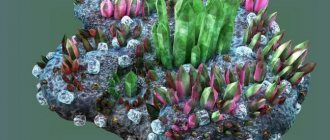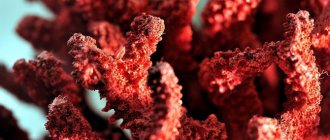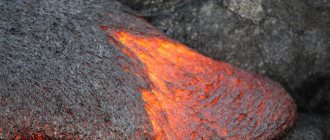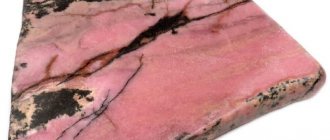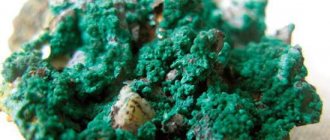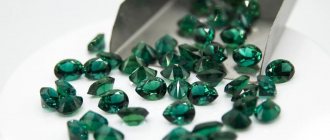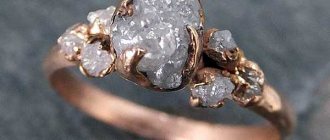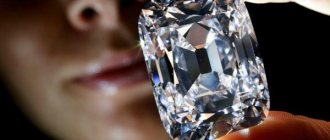Yellow Diamond and its stories
Not every yellow diamond is expensive. Sometimes a sunny color is a sign of a decrease in price, but a bright, rich tonality is a factor in its increase. Pronounced yellow is a sign of belonging to fantasy stones. These are rare, sold at auctions and cost thousands and even millions of dollars.
Formation process and coloring
A yellow diamond (diamond) is a stone whose color is determined by its structure and impurities. The crystal lattice of the transparent mineral contains carbon, the yellowish tint is the result of nitrogen atoms. The higher the percentage of impurity, the brighter the color of the formation. At the same time, the properties of the mineral are preserved.
Diamond engagement rings
A yellow gold and diamond engagement ring is an ideal option for loving couples. This decoration will look great on the hands of the newlyweds. Yellow diamonds, with their hues of expensive sparkling champagne, can add warmth to any piece of jewelry. They will help create a joyful mood in anticipation of happiness.
An engagement or wedding ring with a yellow diamond is not just one of the precious wedding accessories, it is a sign of mutual respect, a symbol of the promise of eternal fidelity. This is a luxurious gift for lovers to each other. A gift ring (yellow gold with diamonds) is not an eccentric shock, but a promise of eternal and unchanging love, mutual support in this ever-changing world.
Place of Birth
Precious yellow diamonds are found in some African deposits and in Australia. Occasionally they are found in Russian deposits. Stones with a rich hue are rare, so finding a gem is exceptionally lucky.
Most of it is mined in Africa. The main producers are mines in Angola, Congo, Central African Republic and Sierra Leone. Later, yellow crystals began to be found in Brazilian, Australian outcrops and on the island of Borneo.
For several decades, the leading supplier was the Ellendale mines in Australia - they provided half of the jewelry crystals. Now Yakutia, Canada, has reached the top in terms of production.
Yellow crystal
Folk signs and zodiac signs
Diamonds play an important role in astrological forecasts. According to astrologers, this is an exceptionally strong stone, in which the maximum amount of all the energy of the zodiac signs is concentrated, so everyone can wear it without exception.
According to popular belief, the loss of a stone from a piece of jewelry promised the girl a wedding soon, but only if the diamond fell out and was later found.
The gift of a diamond ring symbolizes a long life in love and harmony.
A diamond obtained by criminal means brings all sorts of misfortunes to its new owner, including violent death.
Diamond properties
Diamond is one of the most expensive stones in the world. It is durable and cannot be scratched by other stones.
Properties of the mineral:
- stability in contact with concentrated acids;
- high resistance to heat;
- refraction up to 2.42 units;
- hardness 10 units;
- ability to scratch glass;
- high thermal conductivity.
Fantasy mineral
Exclusive products with colored diamonds. View catalog >>>
— A great 1.01ct Cushion shape Fancy Intense Yellow diamond.
The stone has lovely strong Yellow color and a nice wonderful sparkle. It has a 64.6 percents of depth which makes it look much bigger than its real size. It's also GIA graded very good polish. Sert. GIA – A 1.50ct cushion shape Fancy Light Yellow diamond with a great color saturation. The stone is GIA graded VVS1 clarity, very good polish and good symmetry. A perfect stone for a Canary diamond engagement ring. Sert. GIA.
Classification of yellow diamonds
For classification, the international system presented by the American Gemological Center is used. When examining a transparent sample, it is weighed, the purity and brightness of the color, the quality of polishing, the cutting method, and color nuances are checked. When evaluating a fancy stone, only the color, purity of the mineral and its weight are studied. The first parameter is the most difficult to analyze. The final price of the stone depends on it - a weak yellow tone greatly reduces the cost, a bright color sharply increases it.
Carats
Special jewelry scales are used for weighing. When examining a sample, the jeweler checks not only the weight, but also the length of the stone. 0.01 carat – 1 mm, 0.02 carat – 1.7 mm, 1 carat – 6.4 mm. The larger and heavier the crystal, the higher the cost. A yellow diamond less than one carat is not uncommon, a one-carat example is a socially significant jewel, and jewelry with a stone larger than 2 carats is an exceptional rarity.
Weight is one of the factors in the assessment
Purity
Purity is an indicator of the transparency of a stone. Current classification:
- F-IF – pure crystal without impurities, defects inside and outside the stone;
- VVS1-VVS2 – pure sample with small inclusions;
- VS1-VS2 – stone with small inclusions;
- SI1-SI2 – crystal with inclusions that can be seen without magnifying optics;
- I1-I3 – the cheapest type, a crystal with large impurities.
Russia has adopted its own 12-step classification system. Stage 1 includes the purest samples, stages 9-12 include stones with impurities that are visible without magnification.
Color
For yellow fancy stone, color is a key grading factor. Experts divide tonality into 6 categories:
- Fancy Light Yellow;
- Fancy Yellow;
- Fancy Intense Yellow;
- Fancy Vivid Yellow;
- Fancy Deep Yellow;
- Fancy Dark Yellow.
There is a global system for assessing the quality of stone
The certificate accompanying any famous stone indicates the color code in accordance with the international classification system. The lightest is marked G, the richer the tone, the higher the level - each subsequent one is indicated by the next letter of the Latin alphabet. The most saturated color is Z.
Russia has adopted its own assessment system, which includes two classes:
- Class 1 – crystals weighing 0.01-0.29 carats, colored in tones from light to deep yellow;
- Class 2 – stones weighing 0.3 carats or more.
Intensity
Intensity is assessed on a 4-step scale:
- near colors (the lightest stones);
- faint yellow (saturation closer to medium);
- very light yellow (saturation slightly above average);
- light yellow (bright crystals).
In the jewelry world, bright yellow diamonds are called cape, slightly yellowish diamonds are called top cape, and specimens with a subtle yellowish tint are top crystal.
Cut
Cut is a factor in the evaluation of a clear diamond. When analyzing the properties and price of a fancy stone, the type of cut is not taken into account. All that matters is the quality of the work performed and the absence of defects.
Yellow – rare fantasy stones
Popular diamond cutting methods:
- circle;
- pear;
- oval;
- heart;
- marquis;
- baguette;
- emerald;
- princess.
Characteristics, mining and production of diamonds
This beautiful mineral received its name due to one of its inherent qualities - extraordinary hardness. Diamond also has a number of other characteristics that make it exceptional.
Some of the amazing properties of diamond:
- high density of stone, making its processing quite expensive and difficult;
the ability to withstand the action of even the strongest acids in high concentrations;- combustion at a temperature of 720 degrees, and at 1200 degrees (under atmospheric pressure) - transformation into graphite;
- simplicity of composition compared to other minerals (pure carbon).
Diamond mining is carried out on almost all continents. Most deposits are concentrated where there is a horizontal occurrence of rock layers. The deposits themselves can be indigenous (or primary), that is, formed on igneous rocks and not subject to destruction or transformation. When the primary deposits are destroyed, alluvial (secondary) deposits appear.
The diamond mining process itself is quite expensive and labor-intensive. Almost until the 19th century, it was reduced to raking river sand with a shovel and washing it in special trays.
Modern mining is carried out in several stages, which include:
- the exploration stage, during which the search for new deposits and the extraction of the first specimens of precious stones are carried out;
the infrastructure stage, at which the preparation of the site for the development of the deposit is carried out, the purchase of equipment and the organization of accommodation for personnel involved in the process of mining and processing the mineral;- factory stage (construction of a processing plant), accompanied by primary diamond processing;
- the mining stage, at which, after primary and secondary grinding of ore, its sifting and sorting, the resulting valuable material is sent to the sorting shop. Once the sorting process is completed, the stones are put up for sale.
When separating diamonds from waste rock, various methods are used, including fatty, X-ray, suspension and electromagnetic installations. The principle of their operation is based on the detection and cutting of precious stones from the main mass for their subsequent processing.
The main diamond mining is carried out in Russia (Yakutia, Perm and Arkhangelsk regions), followed by Australia and the Republic of Botswana. At the same time, the yellow diamond is found both in Australian deposits and in Yakutia. Such minerals are distinguished by a special crystalline shape, curved-rounded.
Yellow diamonds themselves are not uncommon. However, intensely colored stones are highly valued. A yellow mineral of a calm, traditional color, the color of which is given by minor nitrogen impurities, will be designated “cape”.
The bright yellow, fancy color may otherwise be called "canary" (a lemon tint) or "sunflower" (an orange-yellow tint). To change the purity or color of a mineral, it can be refined.
Famous yellow diamonds
Jewelry with yellow diamonds is traditionally highly valued. Fancy stones are rare, expensive, and available only to a select few. The yellow stone symbolizes nobility and uniqueness.
Diamond Tiffany
The year 1877 gave the world a diamond of 287.42 carats. It was discovered in the South African Kimberley mine and sold to Tiffany. The deal for 18 million was made in 1878 with Charles Tiffany, who owned the company at that time. For the next year, the stone was examined by staff gemologist Kunz, and then went for cutting. During processing, the weight decreased to 128.54 carats. The diamond was given 90 facets. The final crystal length is 28.25 mm, width 27 mm, thickness 22.2 mm. In 1893, it was presented at the Chicago International Exhibition as the highlight of the program, and in 1901, the diamond won first place at the exhibition in Buffalo.
In 1896, Chinese Viceroy Li Hongzhang, while visiting New York, wanted to see the jewel with his own eyes. Tiffany agreed, and the event gave the mineral even more status.
In the entire history of its existence, only three girls wore the fantasy diamond:
- Sheldon Whitehouse at the 1957 Tiffany Ball;
- Audrey Hepburn in a 1961 ad for Breakfast at Tiffany's;
- Lady Gaga at the 2019 Oscars.
Bird on a rock
The luxurious brooch “Bird on the Stone” was created by jeweler Schlumberger in 1960 from a Tiffany diamond. The brooch depicts a gold and platinum bird, decorated with clear and yellow diamonds. The figurine stands on a priceless yellow diamond.
Bird on a stone
In 1972, Tiffany announced that they would sell the jewelry to anyone who wanted it for $5 million if he responded to the offer within 24 hours, but there were no bidders. In 2006, “Bird on a Stone” participated in the Washington National Gemstone Collection, and six years later the diamond was freed from the pommel and included in a necklace with white diamonds. The jewelry is now stored in the Tiffany store on 5th Avenue.
Golden Jubilee
Small stones can be used to decorate a ring or pendant, but some diamonds are so large and luxurious that they are only suitable for storage in a collection. This is the “Golden Jubilee”, weighing 545 carats. Before cutting, the stone weighed 755 carats. It took 2 years to process it. The mineral was discovered in 1986 in southern Africa, and only in 1990 was the finished jewel presented to the public. The diamond was purchased by Thai entrepreneurs as a gift to King Bhumibol Adulyadej. In 2000, Adulyadej’s daughter accepted the gift. The diamond is now in the Royal Museum in the capital and is available for inspection.
Golden Jubilee
Golden Giant
The second name of the crystal is Incomparable. This is the 3rd largest human-cut diamond in the history of jewelry. Initially it weighed 890 carats; after cutting, 15 crystals were obtained, of which the largest was 407.08 carats.
Incomparable was discovered in the Congo in abandoned mines in Mbuji-Maiv in the early 80s of the last century. He was found by a girl walking in the area. The diamond was sold to African dealers, then to European ones, and from them to American ones. It took 3 years to cut; the shape of a triangular kite was chosen. In 1988, the diamond was put up for auction, but could not be sold at the original price. The final amount of the transaction was 12 million. In 2002, the diamond was put up on Ebay for 15 million and sold for 16.5 million to a sheikh from Saudi Arabia. Since 2009, the diamond has been on permanent display at the Royal Canadian Museum.
Alnutt
Alnutt is named after the first owner, Major Alfred Alnutt. He bought the diamond in the early 50s and ordered a brooch from Cartier, the center of which was to be the jewel. Cartier made a platinum flower with 5 petals, 2 leaves, a stem, inserting a fantasy crystal into the center, and decorating the leaves and petals with small transparent stones.
In 1996, Alnutt was sold at a Geneva auction for $3 million. In the late 90s, the stone was recut, making the color more intense, but reducing the weight. In 2003 and 2005, Alnutt participated in exhibitions at the Smithsonian Institution.
Alnutt
Drop of Sun
The Sun Drop is the largest fancy yellow diamond, decorated with a pear. It weighs 110.3 carats and was sold in 2011 at Sotheby's for 10.9 million to an anonymous buyer. The stone was discovered in a South African mine in 2010. Laboratory testing has proven that it appeared 1-3 billion years ago. Cutting took 6 months. The finished stone has 56 facets, its height is 3.94 cm, width 2.83 cm. Certification showed that it belongs to the VVS1 color group. Before the auction, the jewel was exhibited for 6 months at the London Museum in the Pyramid of Hope, which consisted of 296 diamonds.
De Sancy
De Sancy is a pale yellow teardrop-shaped diamond weighing 55.23 carats. Believed to have been discovered in eastern India in 1064, it originally weighed 101.25 carats and was given in exchange for a pair of elephants, 12 camels and 80 gold coins. The stone passed from ruler to ruler, then was lost and reappeared in history in 1325, when Muhammad of Tughlaq acquired it from a foreign merchant. Then the diamond disappeared from history again and in 1473 it appeared in the possession of Charles the Bold. Two years later, its processing was entrusted to Van Berken. After cutting, the diamond was reduced by 48 carats and received 32 facets. By the 1570s, Nicolas de Sancy bought the jewel from a Turkish jeweler. Since Sancy had a brilliant career, he glorified not only himself, but also the jewel. He sold it to James the First, then Mazarin bought the stone and gave it to the Bourbon dynasty. After the French Revolution, the diamond disappeared from history until 1828 - this year it was bought by Pavel Demidov. The new owner then sold the diamond to Indian Jamsetji, who the following year sold it to an unknown buyer, from whom the jewel passed to an anonymous buyer. In 1867, De Sancy appeared at the Paris World Exhibition, and in 1906 - in the Astor collection. In 1978, the diamond was sold to the Louvre, where it is now located.
De Sancy
Diamond Graf Vivid Yellow
Graff Vivid Yellow – 100 carat fancy bright diamond sold for 16.3 million at Sotheby's. The diamond was not bought the first time: after the sale was announced, the lot was suddenly withdrawn, and 15 minutes later it was returned to auction.
It is known that at first a certain woman wanted to buy the stone for a high price, but after agreeing she refused to purchase it. It was assumed that the diamond would go for 15-25 million; the final transaction price was only slightly higher than the lower predicted threshold.
Bandeau tiara
In the book “The Coronation or the Last of the Romanovs,” Boris Akunin mentions several luxurious jewelry that existed in reality. One of them is a bandeau tiara with solar diamonds and opals, depicting a garland of flowers. In reality, the tiara is encrusted only with diamonds and decorated with enamel. It was created in the 1750s from clear diamonds attached to a colored foil base. This technique allows you to color colorless stones.
Clarity and cutting methods
Fancy yellow diamonds are classified according to the international diamond grading scale into shades from faint and light fancy to bright and deep fancy. It is also possible to artificially color (ennoble) the stones.
The purity of a diamond is determined by the presence or absence on the surface of the crystal, cracks, cloudiness, foreign inclusions and other defects that impair the play of light in the stone. If a yellow diamond has been refined, there must be a note about this in the certificate.
A number of techniques are used to improve the clarity of the stone, such as laser drilling and crack filling. Minerals that have undergone this treatment are often referred to as “crack filled” stones. The amount of filler is so small that it adds almost no weight to the diamond. However, the holes are small, so only a professional can detect the result of the improvement.
However, this method can only improve the clarity of the stone by a couple of levels. Not just any extraneous inclusion can be removed. The advantages of this treatment include a lifetime guarantee (a refined diamond will not lose its qualities over time), as well as the product’s immunity to high temperatures, steam or ultrasonic cleaning.
The stone may not need refining if it is well-cut. Indeed, as a result of cutting, the surface of the crystal is polished, as a result of which small cracks and other flaws are removed.
The shape and arrangement of the edges are selected in such a way that the light falling on the stone is refracted, causing it to play with all the colors of the rainbow.
Diamond cuts are often used to cut clear cameos. Yellow Diamond is no exception. There are different forms of cutting that present the stone in the most favorable light. They are selected depending on the natural characteristics of a particular crystal.
The most popular methods of cutting diamonds:
- actually diamond, is usually used when cutting round minerals. The edges of different tiers alternate in a checkerboard pattern. The shape of the edges itself is triangular or diamond-shaped. The finished product is usually spherical in shape;
stepped, when the edges in the shape of a trapezoid or triangle are located one above the other. It is sometimes referred to as a variety of brilliant cut. Usually rectangular crystals are cut in this way;- so-called “rose” or “rosette” cut. The base of such a product is usually flat, and the edges meet at a convex top. This method is suitable for cutting small and not very high-quality stones.
There are also such diamond cuts as “princess”, “heart”, “pear”, “marquise”, “cushion”, which perfectly highlight the radiance and color of the stone. These methods are classified as fantasy.
Magical properties of a noble mineral
A yellow diamond is a stone with great energetic power. Since ancient times, it has been believed that the gold color makes its owner more courageous, decisive, and brings success, which makes one’s head spin. The mineral tames passionate fantasies, emancipation, protects the owner from vices, bad influence, the evil eye and damage.
But it must be remembered that the proud diamond is indifferent to mere mortals, he loves high-ranking personalities. It is not for nothing that the mineral was worn by kings, nobles, high priests, and now celebrities flaunt along the red carpet, decorated with products with sun stones.
Although, if you received jewelry as a gift or it was inherited, then the radiant stone will help you. This will not happen soon, because the mineral needs to get used to the new owner and tune in to its energy.
Where did it all start?
The most famous yellow diamond, which weighs 55 carats, is named after its first owner, Nicolas de Sancy. The lemon-colored stone was purchased in 1571 from a jewelry dealer in Turkey. The solar mineral helped its owner achieve unprecedented heights - an ordinary attorney became the first minister of France.
The diamond's journey began after the death of the politician. “Sancy” belonged to the English kings, and James I, dreaming of taking possession of the diamond, emptied the royal treasury and bought it on credit. During the tumultuous times of the great French Revolution, the mineral was lost, but in 1829 it miraculously ended up in Russia. The stone stayed there for 50 years and soon returned to its homeland thanks to an American lord named Astor. Now the diamond, whose price was $1 million, is kept in the Louvre and amazes aesthetes with its brilliance and interesting history.
Diamond Tiffany
A huge canary-colored diamond was found in a South African mine in the 1870s. It was an amazing mineral, weighing more than 288 carats. The found jewelry was taken to Paris, where it was purchased by Charles Tiffany, owner of the Tiffani & Co jewelry house. The cost of the future diamond was more than 400 thousand dollars.
The journey of the famous diamond did not end there. It was transported to New York, where the master of his craft, Georg F. Kunz, began cutting the stone. The jeweler worked tirelessly for more than 2 years, and as a result, the world saw a yellow diamond of unearthly beauty.
The mineral acquired a very interesting quadrangle shape with rounded edges. Unfortunately, after processing the stone began to weigh much less - 128.5 carats. Due to such a significant loss, the owner of the diamond decided to create a unique setting and turned to designer Gene Schlumberg, who created the “Bird on the Stone” from platinum intertwined with gold. And her feathers became white and yellow stones.
This jewel has been kept in the most luxurious store in New York for more than a hundred years, and only one celebrity - the incomparable Audrey Hepburn - was given the honor of displaying the yellow diamond. The stone was inserted into a massive necklace, shimmering with the sparkle of snow-white diamonds. The actress shone in it during the filming of an advertisement for the film “Breakfast at Tiffany’s.”
